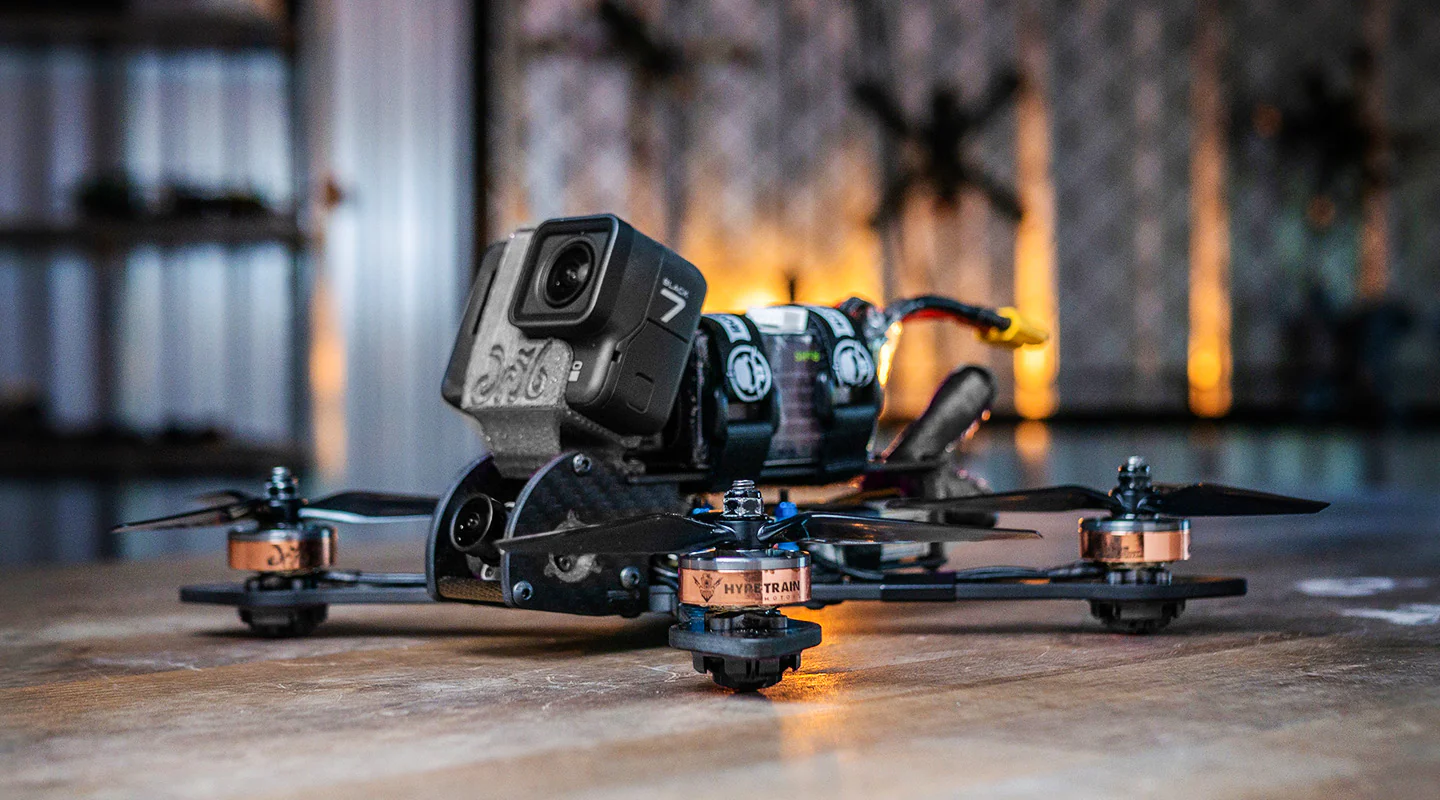FPV drones, short for First-Person View drones, have revolutionized the way we interact with unmanned aerial vehicles. Unlike traditional drones, FPV drones provide a unique experience by allowing the pilot to view the world from the drone’s perspective through a video feed. This immersive technology offers unparalleled control and precision, making FPV drones a favorite among hobbyists, professional videographers, and racers.
Whether you’re an experienced pilot or new to the world of drones, understanding the nuances of FPV technology, the different types of FPV drones, and the factors influencing FPV drone prices can help you make an informed decision when choosing the best FPV drone for your needs.
What is an FPV Drone?
An FPV drone is equipped with a camera that transmits live video footage to a display device, usually worn as FPV goggles or displayed on a screen. The camera gives you a bird’s-eye view, allowing you to navigate the drone as if you were sitting in its cockpit. This technology has made FPV drones highly popular in racing, freestyle flying, and aerial photography.
FPV drones differ from conventional drones in several key ways. For starters, traditional drones are typically flown using line-of-sight controls, meaning the operator can see the drone from the ground. In contrast, FPV drones rely on real-time video feeds, which makes flying more dynamic and immersive. The first-person perspective also allows pilots to execute more precise maneuvers and perform complex tricks, especially in racing scenarios.
Types of FPV Drones
The world of FPV drones is vast, with different types suited for various activities such as racing, videography, and freestyle flying. Below are the main categories:
- FPV Racing Drones
- FPV racing drones are built for speed and agility. These drones are designed to zip through obstacle courses at high speeds, requiring fast reflexes and excellent control from the pilot. FPV drone racing is a growing sport, with enthusiasts participating in local and international competitions.
- Best FPV racing drones often feature high-performance motors, durable frames, and lightweight construction to minimize drag.
- Cinematic FPV Drones
- Cinematic FPV drones are ideal for capturing stunning aerial footage. These drones focus more on stability and video quality rather than speed. Equipped with high-definition cameras, they allow filmmakers and content creators to shoot breathtaking videos, often used in extreme sports and real estate videography.
- While the price of FPV drones used for cinematic purposes may be higher due to their advanced camera systems, the investment is often worth it for professionals.
- Freestyle FPV Drones
- Freestyle FPV drones combine the speed of racing drones with the maneuverability needed for performing tricks and stunts. Pilots can perform flips, rolls, and sharp turns with these drones, making them perfect for aerial acrobatics.
- Tiny Whoop FPV Drones
- Tiny Whoops are small, lightweight FPV drones that are perfect for indoor flying. Despite their small size, these drones can be quite agile and are a popular choice for beginners. They are also affordable, making them an entry point for anyone curious about FPV flying.
The Best FPV Drone: What to Look For
Choosing the best FPV drone depends on what you intend to use it for. Factors like speed, camera quality, range, and durability play significant roles. Here’s what you should consider when looking for the best FPV drone:
- Camera Quality
- If your focus is on capturing stunning videos, look for an FPV drone with a high-definition camera. Some drones come equipped with 4K resolution cameras that can capture crisp footage. The camera’s field of view and the quality of the video feed (real-time footage) should also be factored in.
- Speed and Agility
- For FPV racing enthusiasts, speed and agility are paramount. The best FPV racing drones can reach speeds of over 90 mph (145 km/h) with impressive acceleration and handling. Look for drones with lightweight frames and powerful motors for optimal performance.
- Flight Time and Battery Life
- Battery life is a crucial aspect of any drone. FPV drones typically offer flight times between 5 to 10 minutes, depending on the size and battery capacity. It’s wise to invest in spare batteries if you plan on extended flying sessions.
- Durability
- Crashing is a common occurrence in FPV flying, especially in racing or freestyle flying. The best FPV drones have sturdy frames made from carbon fiber or other durable materials that can withstand hard landings.
- Price
- The FPV drone price can vary widely depending on the drone’s specifications and capabilities. From budget-friendly options for beginners to high-end models for professionals, there is an FPV drone for every price range.
FPV Drone Price: What Affects It?
The price of FPV drones can range from under $100 to several thousand dollars, depending on the features, camera quality, and intended use. Here are the factors that influence FPV drone price:
- Build Quality
- High-end FPV drones often feature frames made of lightweight and durable materials like carbon fiber, which can raise the price. Additionally, drones built with premium motors and electronics cost more but provide better performance and longevity.
- Camera and Gimbal
- A high-definition camera with a built-in gimbal (which stabilizes the camera during flight) will increase the FPV drone price. Drones used for professional videography or photography often come with advanced camera systems capable of shooting 4K or even 8K footage.
- Flight Controller
- The flight controller is the brain of the drone, and more advanced controllers allow for better control, smoother flying, and more responsive handling. The sophistication of the flight controller can impact the price significantly.
- Transmission Range
- The range at which you can control the drone and receive video transmission varies among FPV drones. Drones with longer transmission ranges, allowing for flights over greater distances, tend to be more expensive.
- Ready-to-Fly (RTF) vs. Build-Your-Own Kits
- FPV drones are available as Ready-to-Fly (RTF) kits, where everything is included in the box, or as Build-Your-Own kits, where you assemble the drone yourself. RTF drones are often pricier because of the convenience they offer, but many hobbyists prefer building their own drones from scratch for a more personalized flying experience.
Building Your Own FPV Drone
For hobbyists and enthusiasts who enjoy DIY projects, building your own FPV drone can be a rewarding experience. Not only can you customize the drone to meet your specifications, but it can also be a cost-effective alternative to buying a pre-built drone.
To build an FPV drone, you’ll need several key components:
- Frame
- The frame is the skeleton of your drone. You can choose between lightweight racing frames or more durable options for freestyle flying.
- Motors
- The motors power the propellers, and selecting the right type is essential for achieving your desired speed and control.
- Flight Controller
- The flight controller processes data from the transmitter and converts it into motor commands. Different controllers offer different levels of customization and control.
- Camera and Video Transmitter
- Your FPV camera should provide clear video footage, while the video transmitter sends this footage to your goggles or screen.
- Goggles
- FPV goggles are essential for immersive flying. Some pilots prefer analog goggles, which offer low latency, while others opt for digital FPV goggles, which offer superior video quality.
The Future of FPV Drones
As FPV drone technology continues to evolve, we can expect to see even more advanced features that will enhance the flying experience. Innovations such as autonomous flight, AI-assisted control, and improved battery efficiency could make FPV drones even more accessible and exciting.
Additionally, the rise of FPV drone racing as a professional sport is driving the development of faster and more agile drones, further pushing the boundaries of drone technology.
Conclusion
FPV drones offer a thrilling, immersive flying experience that appeals to a wide range of users, from casual hobbyists to professional racers and filmmakers. Whether you’re searching for the best FPV drone for racing, videography, or freestyle flying, understanding the key features and what affects FPV drone prices can help you make an informed decision.
From budget-friendly models to high-end drones packed with cutting-edge technology, there’s an FPV drone out there for everyone. With the right drone in hand, the sky truly is the limit.











